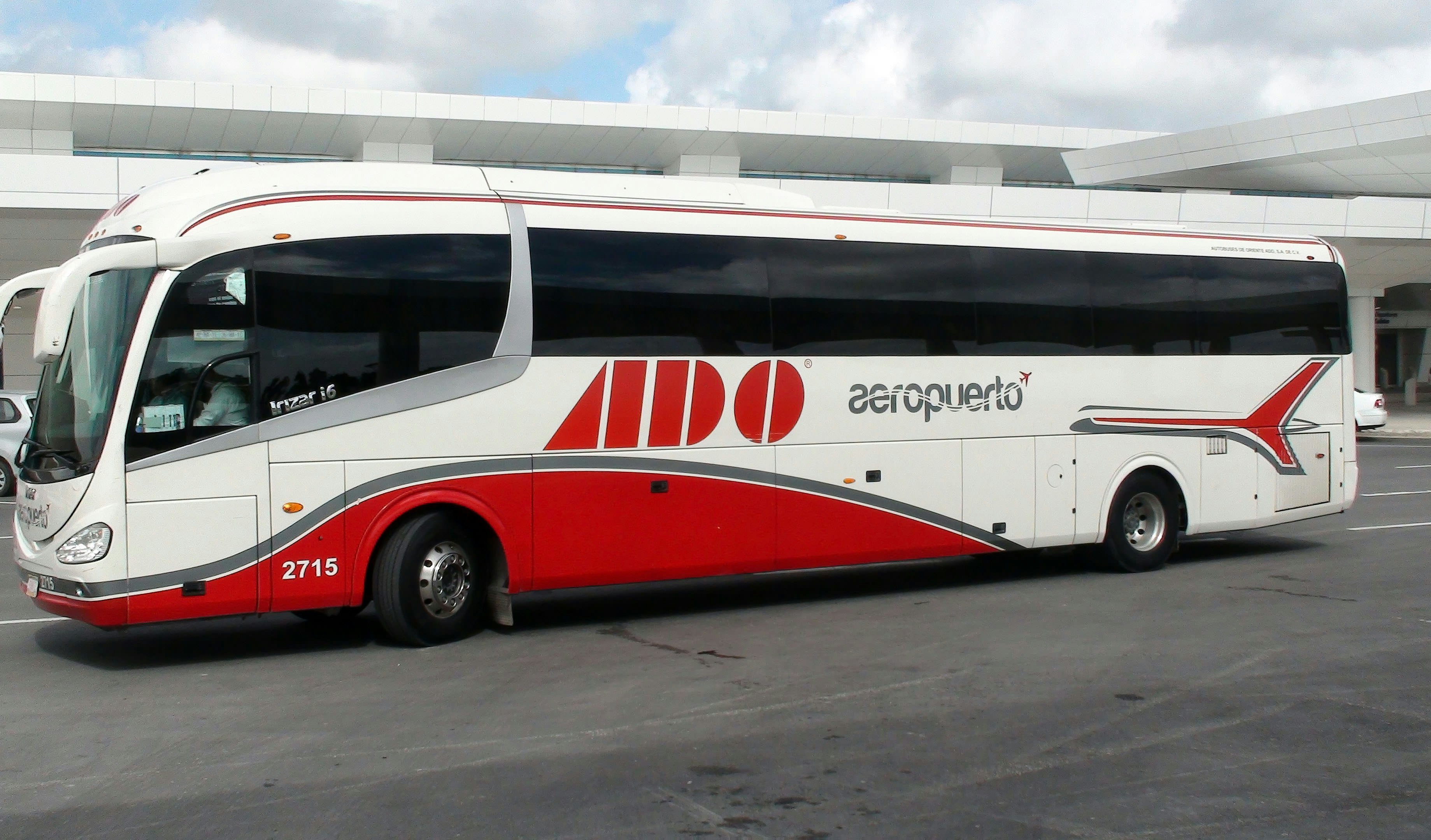
There are plenty of ways to get between the fantastic beach towns on the Riviera Maya. edfuentesg / Getty Images
The Riviera Maya is a compact stretch of Caribbean coast jam-packed with activities ranging from snorkeling technicolor reefs, swimming in cenotes and simply lounging on picturesque stretches of sand. And, conveniently, none of these things are too far from one another, making the area perfect for exploring independently.
No car? No problem. We’ve compiled some tips to help you navigate this world of geological wonders, historic marvels and sunny paradises.
Colectivos
The 14-person white minivans, dubbed colectivos, are the lifeblood of the transit system through the Riviera Maya, running up and down the main highway between Cancún and Tulum to transport both tourists and locals from spot to spot.
If you’re based in Playa del Carmen, head to Calle 2 and Av 20 to catch your ride, the intersection that serves as the city’s primary colectivo depot; a person will direct you to the appropriate van based on your destination. Depending on how far you’re traveling, a fare can cost M$20-45 (USD$1-2.40) per person -- the colectivos run into the evening (frequently taking people home after work), so you’re likely to find one at most times during the day.
In Tulum, the colectivos tend to congregate close to the ADO station downtown, but be aware that these vehicles do not generally transport tourists to the Zona Hotelera and the beach; they head there infrequently and are largely reserved for those who live and work in the area. Use colectivos here primarily to head back up the coast towards Cancún. In Cancún, you can also catch the collectivos downtown near the ADO station.
These vans don’t just stop at the Riviera’s biggest cities, either – you can hope off at a number of stops along the highways, including tourist stops like Xcaret and Akumal; to catch a colectivo back, simply head to the highway and wave one down; they travel pretty frequently, so you generally won’t have to wait too long. However, be aware that the vans are more full during rush hour times and you might have a bit of a tough time negotiating a spot.

Taxis
Taxis in the Riviera Maya are another easy way to get around, though fares generally run higher than collectivo rates; for example, a trip from Playa del Carmen to Tulum can cost M$650-700 (USD$34-36) compared to the colectivo’s M$45.
The region is divided into zones with predetermined prices, and these rates tend to be posted at major tourist spots (like the ruins at Tulum), though they aren’t always. Best to research current prices before heading out and use them as reference when quoted fares. The cars tend to be small sedans (so big groups will have to split up), but you can often book taxis for tours throughout the Riviera, an added layer of flexibility for those looking to make their own schedule.
While prices are technically set based on zone, it is possible to be quoted higher-than-usual prices at major stops. Make sure to always confirm fare before embarking on your trip, and knowing enough Spanish to get you through any confusion over payment will be supremely valuable.

Buses
In the event you’re taking a longer trip and want a bit of added comfort, the Riviera also has a well established bus system that is particularly useful when traveling to and from the airport in Cancún.
The ADO bus stations are central to all the main cities along the way, and tickets can be booked either ahead of time online or at the counter on the day of travel; prices from Playa del Carmen to Cancún run M$208 (USD$10) per person, and if you’re heading to Cancún from Tulum, tickets are M$266 (USD$13). These buses also run to popular tourist sites including Gran Cenote, the Tulum ruins and Cobá, making them convenient, stress-free options.
If you’re looking to save a little more money, Mayab buses also run out of the ADO terminals -- these buses have fewer amenities than the ADO vehicles and almost act like colectivos, picking up and dropping off along the bus route, which can slow the journey down depending on how busy they are. Tickets cost M$50 (USD$2.60). That said, Mayab schedules are not posted online and pick-up and arrival times can be a bit unpredictable.

Rental cars
And of course, it’s always possible to rent a car and self-drive the region -- Highway 307 is fairly straightforward to travel, though it can get snarled with traffic close to the cities. As a note, however, bookings are in high demand during peak season, so don’t wait until the last minute to reserve. Be prepared to pay for parking at major tourist attractions, and be aware that parking can sometimes be scarce in some of the more tightly situated places (like Tulum’s hotel zone).
Prices online for rental cars seem surprisingly cheap (sometimes going for as little as USD$5-10 a day), but keep in mind that you must obtain mandatory personal liability insurance that will increase the price per day significantly -- this is required for all vehicle rentals in Mexico.
Plan with a local





